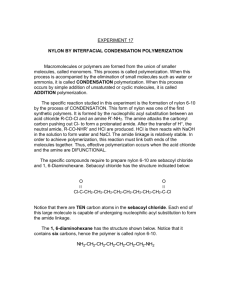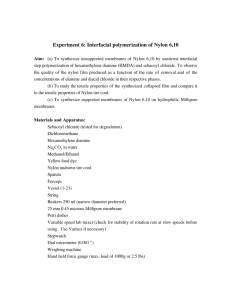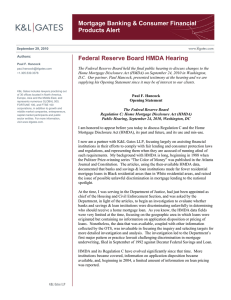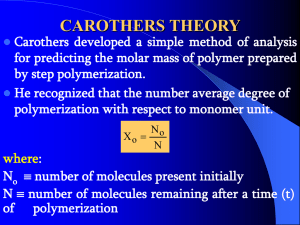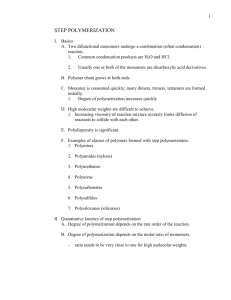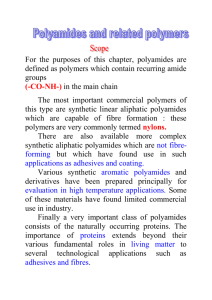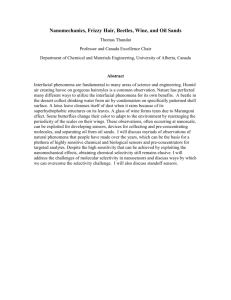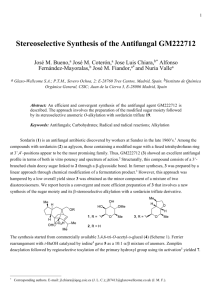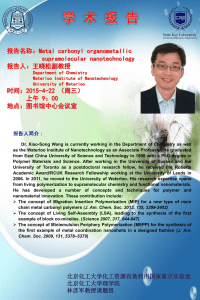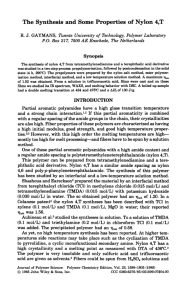Synthesis of Nylon 6, 10 from Interfacial Polymerization
advertisement
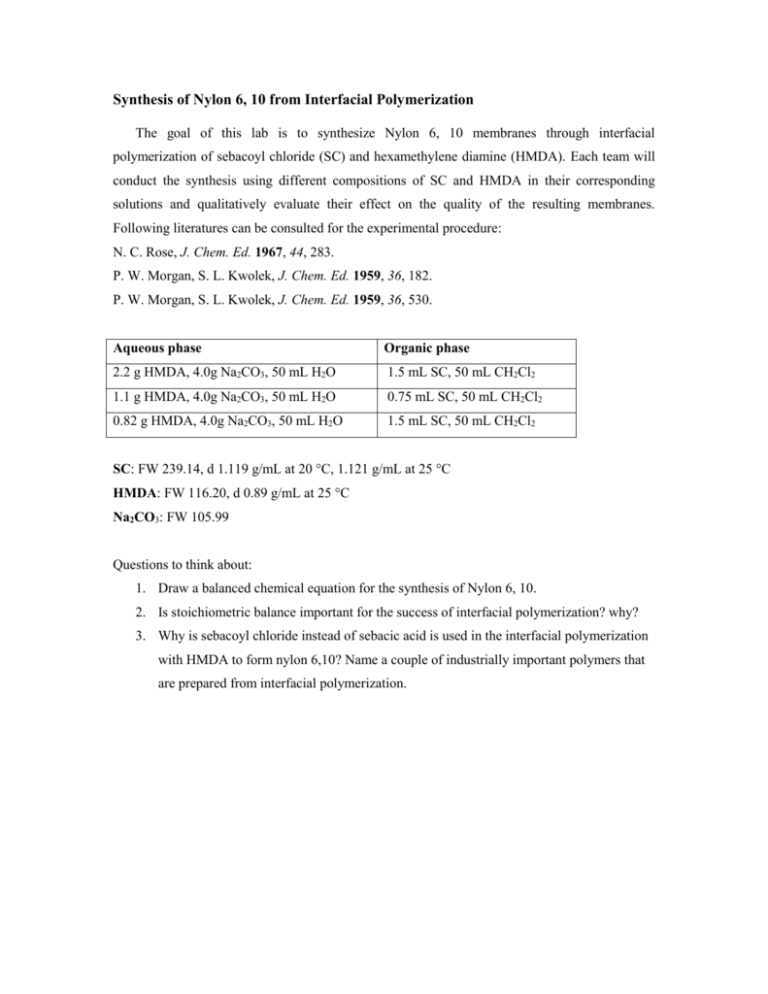
Synthesis of Nylon 6, 10 from Interfacial Polymerization The goal of this lab is to synthesize Nylon 6, 10 membranes through interfacial polymerization of sebacoyl chloride (SC) and hexamethylene diamine (HMDA). Each team will conduct the synthesis using different compositions of SC and HMDA in their corresponding solutions and qualitatively evaluate their effect on the quality of the resulting membranes. Following literatures can be consulted for the experimental procedure: N. C. Rose, J. Chem. Ed. 1967, 44, 283. P. W. Morgan, S. L. Kwolek, J. Chem. Ed. 1959, 36, 182. P. W. Morgan, S. L. Kwolek, J. Chem. Ed. 1959, 36, 530. Aqueous phase Organic phase 2.2 g HMDA, 4.0g Na2CO3, 50 mL H2O 1.5 mL SC, 50 mL CH2Cl2 1.1 g HMDA, 4.0g Na2CO3, 50 mL H2O 0.75 mL SC, 50 mL CH2Cl2 0.82 g HMDA, 4.0g Na2CO3, 50 mL H2O 1.5 mL SC, 50 mL CH2Cl2 SC: FW 239.14, d 1.119 g/mL at 20 °C, 1.121 g/mL at 25 °C HMDA: FW 116.20, d 0.89 g/mL at 25 °C Na2CO3: FW 105.99 Questions to think about: 1. Draw a balanced chemical equation for the synthesis of Nylon 6, 10. 2. Is stoichiometric balance important for the success of interfacial polymerization? why? 3. Why is sebacoyl chloride instead of sebacic acid is used in the interfacial polymerization with HMDA to form nylon 6,10? Name a couple of industrially important polymers that are prepared from interfacial polymerization.

